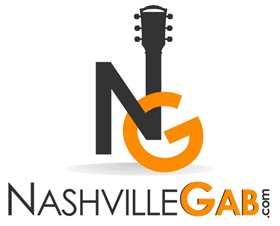Cowboy songs have long been an integral part of American musical heritage, capturing the spirit of the Wild West and serving as a musical chronicle of the cowboy way of life.
From traditional ballads sung around campfires to modern interpretations by contemporary artists, these iconic songs have endured through the ages, shaping cultural perceptions and leaving an indelible mark on the music landscape.
In this exploration, we embark on a journey through the evolution and influence of cowboy songs, tracing their roots, examining their significance, and celebrating their enduring legacy.
The Roots of Cowboy Music: A Heritage of Folk Tradition

Cowboy music traces its roots to the folk traditions of the American West, where cowboys and settlers shared stories and songs around campfires after a long day on the trail.
Influenced by a blend of musical styles brought by immigrants, including European ballads, African American spirituals, and Mexican corridos, cowboy songs reflected the diverse cultural tapestry of the frontier.
These early songs served as a form of entertainment, communication, and companionship for those living and working in the untamed wilderness.
Cowboy Ballads: Tales of Adventure and Romance
Cowboy ballads emerged as a distinctive form of storytelling, recounting tales of adventure, romance, and hardship on the frontier. Songs like “The Streets of Laredo,” “The Cowboy’s Lament,” and “The Yellow Rose of Texas” provided insight into the lives of cowboys and settlers, capturing the challenges they faced and the bonds they forged in the rugged landscape of the American West.
Through vivid imagery and evocative lyrics, these ballads became an essential part of cowboy culture, preserving the oral history of the West for future generations.
Western Swing: From Dance Halls to Radio Waves

The evolution of cowboy music continued with the rise of Western swing, a genre characterized by its upbeat tempo, jazz-infused rhythms, and lively instrumentation.
Pioneered by artists like Bob Wills and the Texas Playboys, Western swing brought cowboy music to a broader audience through radio broadcasts, live performances, and dance halls across the country.
The infectious energy of Western swing captured the spirit of the West while incorporating elements of jazz, blues, and big band music, appealing to a diverse audience and solidifying cowboy music’s place in American culture.

Hollywood Cowboys: The Golden Age of Western Film
Cowboy music reached new heights of popularity during the golden age of Western film, as iconic songs became synonymous with the silver screen. Classic cowboy songs like “Ghost Riders in the Sky,” “Tumbling Tumbleweeds,” and “Cool Water” provided the soundtrack for Hollywood Westerns, enhancing the drama and romance of the frontier.
These songs, often performed by cowboys like Gene Autry and Roy Rogers, shaped cultural perceptions of the American West and contributed to the mythos of the cowboy as a rugged hero of the frontier.
Modern Cowboy Songs: Revitalizing a Timeless Tradition

While cowboy music has roots in the past, it continues to evolve and adapt to the present day. Modern cowboy songs, performed by artists like Marty Robbins, Gene Autry, and Chris LeDoux, carry on the tradition of storytelling through song while incorporating elements of country, folk, and rock music.
These songs explore themes of love, loss, and adventure, celebrating the cowboy way of life and paying homage to the rich history and culture of the American West. Through their music, modern cowboy artists keep the spirit of the frontier alive for new generations of listeners.
| Song Title | Year Released | Artist |
|---|---|---|
| “Streets of Laredo” | 1876 | Traditional |
| “Tumbling Tumbleweeds” | 1934 | Sons of the Pioneers |
| “Ghost Riders in the Sky” | 1948 | Vaughn Monroe |
| “El Paso” | 1959 | Marty Robbins |
| “Rhinestone Cowboy” | 1975 | Glen Campbell |
| “Amarillo by Morning” | 1983 | George Strait |
International Influence: Cowboy Songs Around the World

Cowboy music’s influence extends beyond American borders, with songs and themes embraced by artists and audiences around the world.
Countries like Canada, Australia, and Argentina, where cowboy culture holds a significant place in national identity, have produced their own interpretations of cowboy music, blending local traditions with the timeless melodies of the Wild West. The universal appeal of cowboy songs speaks to their enduring resonance and cultural significance on a global scale.
Legacy and Continued Relevance: Preserving the Cowboy Way
As we ride through history on the melodies of iconic cowboy songs, it is essential to recognize and preserve their legacy for future generations.
Historians, musicians, and cultural organizations play a vital role in safeguarding cowboy music as a vital part of American heritage, documenting its history, promoting its appreciation, and ensuring its continued relevance in the 21st century.
By celebrating the cowboy way of life through song, we honor the pioneers and trailblazers who shaped the American West and keep their spirit alive for generations to come.
Frequently Asked Questions (FAQs)
- What are some examples of traditional cowboy songs?
- Traditional cowboy songs include ballads like “The Streets of Laredo,” “The Cowboy’s Lament,” and “The Yellow Rose of Texas,” which recount tales of cowboy life on the frontier.
- How did cowboy music influence popular culture outside of the United States?
- Cowboy music’s influence can be seen in countries like Canada, Australia, and Argentina, where cowboy culture holds a significant place in national identity. Artists in these countries have produced their own interpretations of cowboy songs, blending local traditions with the timeless melodies of the Wild West.
- What role did cowboy music play in Hollywood Westerns?
- Cowboy music provided the soundtrack for Hollywood Westerns, enhancing the drama and romance of the frontier. Classic songs like “Ghost Riders in the Sky,” “Tumbling Tumbleweeds,” and “Cool Water” became synonymous with the silver screen and shaped cultural perceptions of the American West.
- How has cowboy music evolved?
- While cowboy music has roots in traditional folk traditions, it has evolved and adapted to the present day. Modern cowboy artists like Marty Robbins, Gene Autry, and Chris LeDoux continue to tell stories of the American West through song, incorporating elements of country, folk, and rock music to appeal to diverse audiences.
Conclusion
- Cowboy songs encapsulate the essence of the American frontier, immortalizing tales of adventure, romance, and the indomitable spirit of the cowboy.
- From humble campfire ballads to the grandeur of Hollywood Westerns, cowboy music has evolved while maintaining its timeless appeal and universal themes.
- The legacy of cowboy music transcends borders, resonating with audiences worldwide and serving as a cultural touchstone for the American West.
- Historians, musicians, and cultural organizations play a crucial role in preserving cowboy music as a vital part of American heritage, ensuring its stories and melodies endure for future generations.
- Cowboy songs invite listeners on a journey through history, where the spirit of the cowboy lives on in every note and chord, connecting us to the rugged landscapes and untamed spirit of the frontier.
- As we reflect on the evolution and influence of cowboy music, we honor the pioneers and trailblazers who shaped the American West and celebrate the enduring power of music to unite cultures and preserve the essence of a bygone era.
